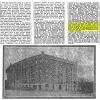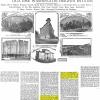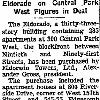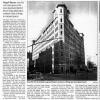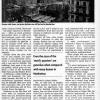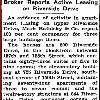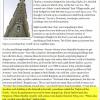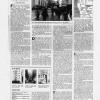 | ||||
 | ||||
 | ||||
 | ||||
 | ||||
 | ||||
 | ||||
 | ||||
 | ||||
Our History: The Grinnell in the News
The Landmarks Preservation Commission...agreed to hold a hearing on a proposal to create an Audubon Park Historic District in Washington Heights.
New York Times, February 17, 2009
Many of the smaller buildings have names like Goya and Velasquez, reflecting the masterpieces found in the collection of the Hispanic Society of America...800 Riverside Drive, the nine-story Grinnell, the other grande dame, has sizable duplex apartments and takes up an entire triangular-shaped block.
New York Times, April 11, 2004
One day in early October, a resident smelled gas in Apartment 3E at 800 Riverside Drive, near 157th Street, a gorgeous turn-of-the-century building...Doing what anyone in that position might reasonably do, this person called Con Ed, the gas company, to sound the alarm.
New York Times, January 19, 2003
At the Grinnell, a triangular-shaped 80-unit Beaux-Arts co-op with a courtyard at 158th Street, a 1,400-square-foot two-bedroom apartment costs $275,000, and a 2,200-square-foot seven-room apartment is priced at $500,000, said Simone Song, owner of Simone Song Properties.
New York Times, October 1, 2000
Newspaper advertisements say that our building, the Grinnell, was completed in August 1911. But we've been told it was designed by George F. Pelham in 1909 and completed in April 1910. Which is correct? . . . Nicholas Bunning, Manhattan.
New York Times, March 5, 2000
1909
An early mention of the Grinnell: Fredenburg & Lounsbury will "improve" the vacant lot betwen Riverside Drive and 157th with "a single structure."
credit: New York Times
1911
The Grinnell, just completed appears in a Times article about development in "one of the most picturesque part of the city," along with an early image of the building.
credit: New York Times
1960
The estate of the Evangelist Daddy Grace sold two of his prime properties to help settle tax claims; one was the Grinnell.
credit: New York Times
2001
An upturn in real estate prices at the end of the 20th Century, once again sent New Yorkers to Washington Heights looking for bargains, bringing the Grinnell into the spotlight once again.
credit: FinancialTimes
 | ||||
(click any thumbnail for larger view)
 | ||||
1938
The Grinnell remained fully occupied throughout most of the Great Depression, despite the size of its undivided apartments.
credit: New York Times
2004
By 2004, the Grinnell, newly-dubbed "the Dakota of the north," was once again receiving flattering media attention.
credit: New York Magazine
1998
As the real estate market improved in the 1990s, the media began to focus on Washington Heights and buildings like the Grinnell.
credit: New York Times
The residents of 800 Riverside Drive celebrating community, a unique sense of place, and an architectural gem
